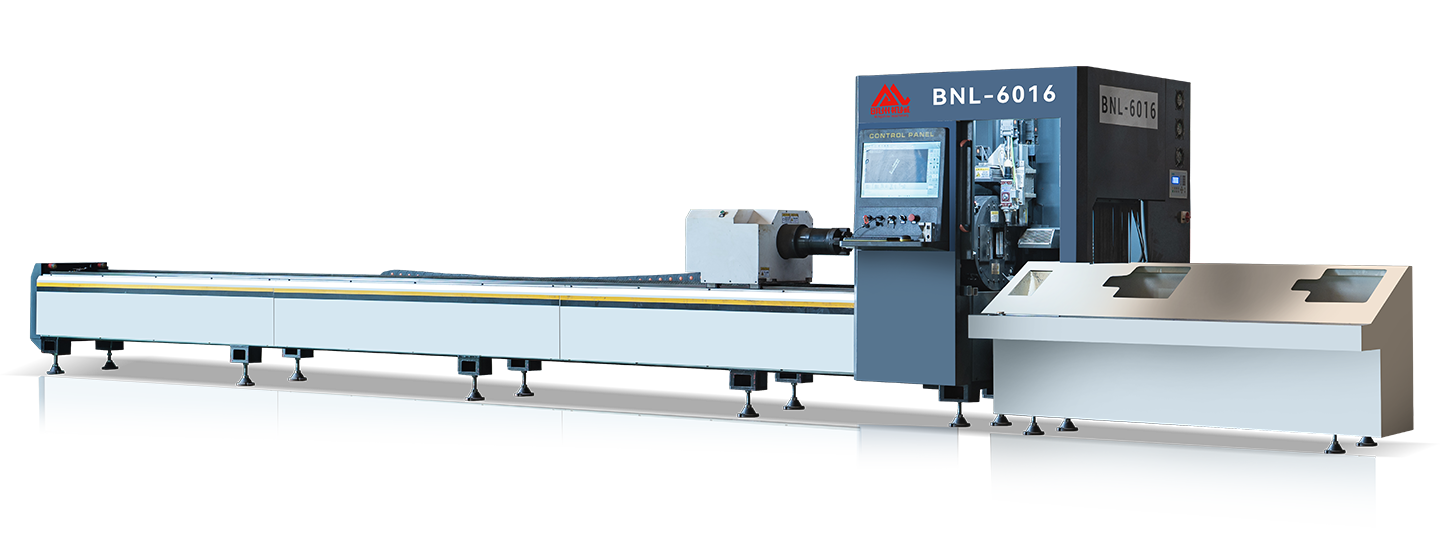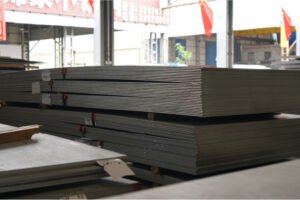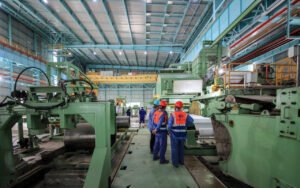Контрольный список соответствия RoHS и REACH для экспортеров листов из нержавеющей стали

Are you struggling to navigate the complex web of RoHS and REACH regulations1 for your stainless steel sheet exports? The fear of rejected shipments, hefty fines, and lasting brand damage is a real threat that can disrupt your entire supply chain and undermine your market position. This comprehensive checklist provides a clear, actionable path to ensure compliance, secure market access, and build unwavering trust with your global clients.
RoHS (Restriction of Hazardous Substances) and REACH (Registration, Evaluation, Authorisation and Restriction of Chemicals) are European Union regulations governing hazardous materials. For stainless steel sheet exporters, compliance is non-negotiable for market access, ensuring product safety, upholding corporate social responsibility, and preventing significant trade barriers.
I’ve personally guided many partners through the initial confusion surrounding these standards. It often feels like an insurmountable wall of acronyms and legal jargon. However, breaking it down into manageable steps transforms this challenge into a powerful competitive advantage. This guide is my attempt to demystify the process, moving beyond the technical-ese to provide a practical framework you can implement in your own export operations.
The global conversation around environmental and health standards is no longer a niche topic; it's a core principle of modern trade. While high-quality stainless steel is inherently robust and largely compliant, risks can emerge from unexpected sources—surface treatment chemicals, anti-corrosion coatings, lubricants used in processing2, or even packaging materials. A study by a leading compliance analytics firm revealed that over 15% of non-compliance issues in industrial goods stemmed from ancillary materials rather than the core product itself. This isn't just about ticking a box; it's a critical examination of risk management, supply chain integrity, and the long-term sustainability of your business in an increasingly regulated world.
What are RoHS and REACH regulations and why are they important for stainless steel sheet exporters?
Feeling overwhelmed by the alphabet soup of RoHS and REACH requirements? This confusion can easily lead to unintentional non-compliance, jeopardizing your hard-won market access and tarnishing your professional reputation. Let's clearly define these critical regulations and establish exactly why they are a non-negotiable aspect of modern exporting for any business dealing in stainless steel sheets.
RoHS restricts specific hazardous substances, primarily in electrical and electronic equipment, while the more comprehensive REACH regulation governs the lifecycle of a wide range of chemicals. For stainless steel exporters, their importance lies in guaranteeing market entry, ensuring product safety, and avoiding the severe legal and financial repercussions of non-compliance.
Understanding the definitions is the first step, but comprehending the "why" reveals the true business imperative. This is about more than just dodging penalties; it's about building a resilient, forward-looking enterprise. In my role at MFY, I’ve collaborated with numerous clients, from engineering contractors in the Middle East to equipment integrators in Southeast Asia, who now view compliance as a fundamental prerequisite for partnership. They recognize that a supply chain is only as strong as its most vulnerable link, and a single non-compliant material can derail an entire project timeline. I saw this firsthand when a partner manufacturing components for a German automotive firm faced a line-down situation because their previous steel supplier couldn't produce the necessary REACH documentation for nickel, a key alloy component. This shift towards proactive, documented compliance is a global current that we, as exporters, must navigate with expertise and foresight.
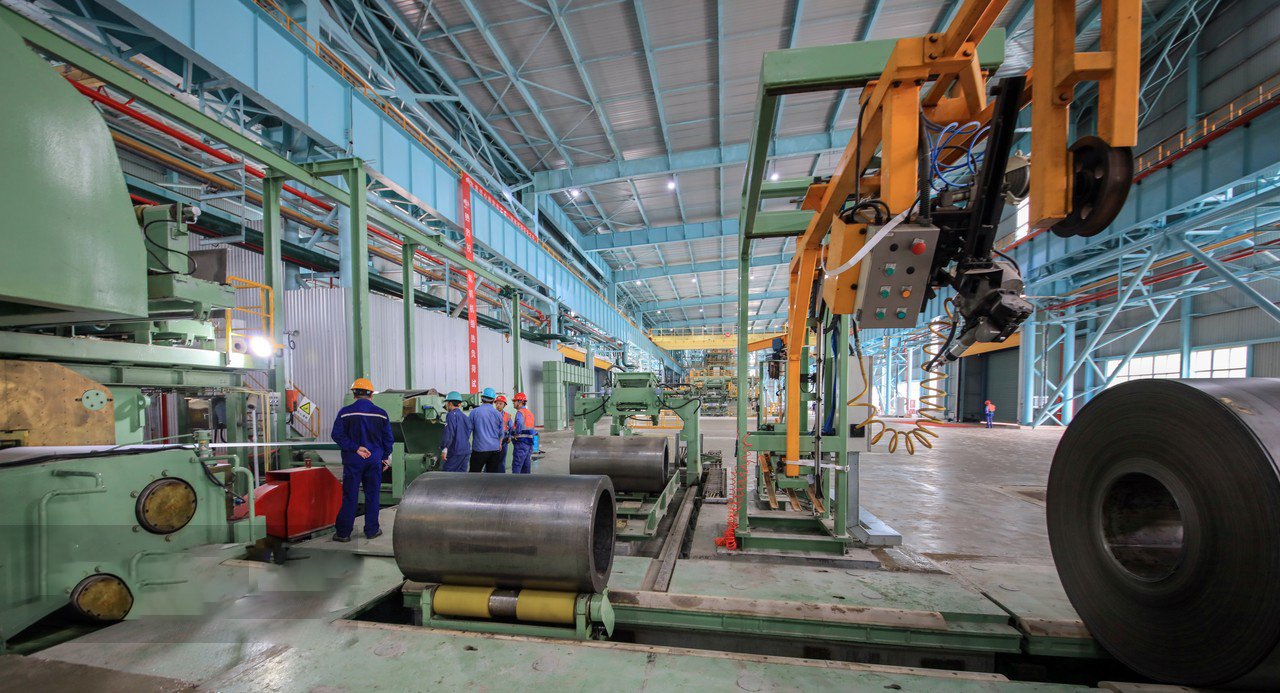
The push for this level of transparency is not merely a bureaucratic exercise; it is a direct response to tangible health and environmental risks. It signals a market that values safety and sustainability as much as it values performance and price. For us at MFY, embracing this means embedding compliance into the very fabric of our integrated supply chain. It's how we provide not just steel, but certainty.
Deconstructing RoHS: Beyond the Base Alloy
The Restriction of Hazardous Substances (RoHS) Directive is often associated with electronics, but its reach extends to any component sold into that supply chain. Initially, RoHS restricted six substances, but the current iteration, RoHS 3, now lists ten. While the base stainless steel alloy—iron, chromium, nickel—is typically free of these restricted substances like lead, mercury, or cadmium in any significant quantity, the compliance risk rarely lies in the alloy itself. The true challenge is in the full lifecycle of the stainless steel sheet, from production to finishing.
During my early days in this industry, I encountered a case that perfectly illustrates this point. A manufacturer of high-end kitchen appliances, a typical end-user of our 304-grade sheets, faced a massive product recall. The issue wasn't the steel; it was a thin, anti-fingerprint coating applied by a third-party processor. This coating contained a type of phthalate (DEHP) restricted under RoHS 3, a substance they hadn't even considered testing for. The financial and reputational damage was immense. This highlights a critical lesson: as an exporter, your compliance responsibility covers the final product as it is delivered, including any and all surface treatments, oils, or even adhesive films used for protection during transit.
At MFY, our integrated model provides a powerful solution to this challenge. Because we control the process from cold-rolling to final processing and packaging, we maintain a complete "material passport." We meticulously vet and document every substance used, from rolling oils to passivation agents, ensuring they are all RoHS compliant. This provides our clients with a certified guarantee that extends beyond the steel's metallurgical composition to encompass every aspect of the finished product they receive.
Understanding the Broad Scope of REACH
REACH (Registration, Evaluation, Authorisation and Restriction of Chemicals) is a far more complex and comprehensive regulation. Unlike RoHS's list-based restrictions, REACH manages the risks associated with potentially harmful chemical substances throughout their entire lifecycle. For stainless steel exporters, the most critical component is managing Substances of Very High Concern (SVHCs). A substance can be classified as an SVHC if it is carcinogenic, mutagenic, or toxic for reproduction, among other criteria. Companies may have legal obligations if an article they produce contains an SVHC at a concentration above 0.1% weight by weight (w/w).
Stainless steel is considered an "article" under REACH, and certain grades naturally contain SVHCs. Nickel, for example, is a listed SVHC and a fundamental component of austenitic stainless steel grades like 304 and 316. This does not mean these steels are banned. However, it does trigger a duty to communicate. As an exporter, you must inform your customers if an article contains an SVHC above the 0.1% threshold. This allows them to fulfill their own compliance obligations further down the supply chain.
We worked with a large construction contractor in Europe who was building a new hospital, a project with exceptionally high material standards. They required a full declaration for every substance in the materials used. Our ability to immediately provide detailed REACH documentation for our 316L stainless steel sheets, including the precise concentration of nickel and a declaration of its SVHC status, was a key factor in securing the contract. Our competitors, who treated REACH as an afterthought, were unable to provide this data quickly, causing fatal delays in their bidding process. This is a perfect example of turning a regulatory requirement into a commercial advantage.
The Global Ripple Effect: Beyond the European Union
While RoHS and REACH are EU regulations, their influence has created a global standard. A growing number of countries have adopted similar frameworks, creating a complex patchwork of international rules. The United Arab Emirates (UAE) has its own RoHS regulation, as do Turkey, Ukraine, and several other nations. China has its own "China RoHS," and even individual states in the U.S., like California with its Proposition 65, have substance-restriction laws. Attempting to manage compliance on a per-country basis is inefficient and prone to error.
The most effective strategy is to adopt the highest global standard—typically the EU's—as your own internal benchmark. This ensures your products are compliant for the most stringent markets and, by extension, for almost every other market as well. For our clients in India and Southeast Asia who manufacture finished goods for global distribution, this is a massive value-add. By sourcing their stainless steel sheets from MFY, which are certified to EU RoHS and REACH standards, they simplify their own compliance journey. They don't need to re-test or re-validate our materials; they can build their products with confidence, knowing the core component already meets the world's toughest standards.
Below is a simplified comparison to illustrate the overlapping nature of these regulations:
| Regulation | Scope | Substance Management | Key Requirement for Exporters |
|---|---|---|---|
| EU RoHS | Electrical & Electronic Equipment (EEE) and its components | Restricts 10 specific substances above a set threshold. | Declaration of Conformity (DoC); Technical File. |
| EU REACH | Most chemical substances on their own or in articles. | Registration of substances; Communication of SVHCs >0.1% w/w. | Provide SVHC declarations to customers upon request. |
| UAE RoHS | EEE and its components (mirrors EU RoHS). | Restricts the same 10 substances as EU RoHS. | Conformity assessment; Registration in the ECP system. |
| China RoHS | EEE and its components. | Two-stage approach: Marking/disclosure, then future restrictions. | Marking products with environmental labels; Disclosure table. |
This global alignment means that a robust, centralized compliance program is no longer a luxury but a necessity for any serious international exporter.
RoHS applies to stainless steel sheetsПравда
While RoHS primarily targets electronics, it applies to any component entering that supply chain, including surface treatments on stainless steel sheets.
REACH bans nickel in stainless steelЛожь
REACH classifies nickel as an SVHC but doesn't ban it - it requires disclosure when concentration exceeds 0.1% in austenitic grades like 304/316.
What challenges do stainless steel sheet exporters face in meeting RoHS & REACH compliance?
Assuming your stainless steel is inherently compliant is a common but dangerous oversight. The reality is that hidden substances in coatings, fragmented supply chain documentation, and constantly evolving regulations can create unforeseen compliance gaps. These gaps can lead to costly customs delays, rejected shipments, and significant liability. Let's identify the specific hurdles exporters like us face daily so we can build proactive and resilient strategies to overcome them effectively.
The primary challenges for stainless steel exporters are the complexity and lack of transparency within multi-tiered supply chains, the high financial and technical costs of rigorous testing, and the difficulty of staying current with the constantly expanding lists of restricted substances under both RoHS and REACH regulations.
These challenges are not abstract risks; they manifest as real-world operational disruptions. I recall a difficult situation with a new manufacturing client in India who was developing a line of medical diagnostic equipment for the European market. They were experts in precision fabrication but underestimated the sheer weight of the documentation required for material compliance. Their previous steel supplier provided incomplete and unverified data, which led to their first shipment being held by German customs for nearly two months. This single oversight created a domino effect, impacting their production schedule, cash flow, and, most importantly, their relationship with their new European distributor. At MFY, we see our role as more than a mere supplier of steel; we are a strategic partner in navigating precisely this kind of complexity. Our fully integrated supply chain is architected to mitigate these risks from the very beginning.

The journey to compliance is fraught with potential pitfalls, from the sourcing of raw ore to the final protective film applied to a polished sheet. Each step represents a potential point of failure if not managed with diligence. Understanding where these challenges lie is the first step toward building a truly robust and defensible compliance program that not only satisfies regulators but also builds deep, lasting trust with your customers.
The Labyrinth of Supply Chain Transparency
The single greatest challenge in RoHS and REACH compliance is achieving full transparency across the entire supply chain. A stainless steel sheet's journey is long and complex, often involving numerous independent entities. It begins with raw materials like iron ore, chromium, and nickel sourced from mines across the globe. These are then processed by smelters, cast into slabs, hot-rolled, and finally cold-rolled into coils by a mill. After this, a processor might cut the coils into sheets, apply a specific finish, and add a protective coating. Each stage involves different chemicals, lubricants, and processes, and any one of them could introduce a restricted substance.
The core problem is fragmentation. An exporter may purchase finished sheets from a processor who bought coils from a rolling mill, which in turn sourced its raw materials from a dozen different suppliers. Getting a reliable compliance declaration from every single link in that chain is a monumental task. Information gets lost, certificates are outdated, or worse, suppliers provide assurances without having done their own due diligence. This lack of a "single source of truth" places an enormous burden of risk squarely on the final exporter. A 2023 industry survey by the Global Supply Chain Institute found that 65% of companies reported having limited or no visibility beyond their tier-1 suppliers, a statistic that underscores the severity of this challenge.
This is the exact problem our integrated model at MFY was designed to solve. By controlling the key production stages from cold-rolling and processing to finishing and packaging within our own group, we eliminate the fragmentation. We aren't chasing down declarations from a dozen third parties; we are the source of the declaration. We provide our clients with a clear, auditable trail and a single, reliable point of accountability, transforming the labyrinth into a straight line.
The Financial and Technical Burden of Due Diligence
Ensuring compliance carries a significant, and often underestimated, cost. The process is not as simple as asking a supplier for a certificate. True due diligence requires a robust system of verification, which often involves technical testing. The primary screening tool is often a handheld X-ray fluorescence (XRF) analyzer3, which can detect the presence of restricted metals like lead, mercury, and cadmium. However, XRF cannot detect phthalates or certain brominated flame retardants. For that, more sophisticated and expensive laboratory methods like Inductively Coupled Plasma (ICP) or Gas Chromatography-Mass Spectrometry (GC-MS) are required.
For a small or medium-sized exporter, the cost of performing this level of testing on every batch of material from every supplier is prohibitive. A single ICP analysis can run into hundreds of dollars. This financial pressure can lead companies to cut corners, relying solely on supplier declarations without verification—a practice known as "paper compliance." This strategy is incredibly risky, as the legal liability ultimately rests with the exporter who places the product on the market. If a non-compliant product is discovered, an unverified supplier declaration offers very little protection.
Our approach is to shift the cost from reactive testing to proactive process control. Instead of testing every single shipment, we implement rigorous controls and audits at the source. We conduct extensive testing on our raw material inputs and have established strict process controls that prevent the introduction of restricted substances. This allows us to certify our output based on a controlled, documented system rather than relying on endless, costly batch testing. For our clients, this means they receive a reliably compliant product without having to bear the direct cost of validation for every order. It's a more efficient, secure, and cost-effective model for all parties.
Navigating the Shifting Sands of Regulation
The final major challenge is the dynamic nature of RoHS and REACH themselves. These are not static, one-and-done regulations. They are living documents that evolve over time. The European Chemicals Agency (ECHA) updates the REACH SVHC Candidate List twice a year. As scientific understanding of chemical risks improves, new substances are added, and the regulatory obligations for exporters change with them. A product that was fully compliant last year may not be compliant today.
Staying ahead of these changes requires a dedicated, proactive effort. It means constantly monitoring regulatory bodies, subscribing to updates, and having a system in place to assess the impact of any new substance on your product portfolio. For most manufacturing and trading companies, whose core competency is making or selling products, dedicating a full-time resource to this kind of regulatory monitoring is a significant overhead. It is often done on a best-effort basis, which can leave a company exposed.
This is another area where partnering with a dedicated, large-scale supplier like MFY provides a distinct advantage. We have a dedicated compliance team whose sole responsibility is to monitor the global regulatory landscape. When a new substance is proposed for the SVHC list, we are already analyzing its potential impact on our product lines and processes. We proactively communicate these changes to our clients, providing them with updated declarations and guidance. This service transforms our relationship from a simple transaction to an ongoing partnership, giving our clients the peace of mind that comes from knowing an expert team is watching out for their compliance future.
Supply chain fragmentation creates compliance risksПравда
The article explains how multiple independent suppliers in the steel production chain make it difficult to obtain reliable compliance documentation.
XRF testing detects all restricted substancesЛожь
The text specifically states XRF cannot detect phthalates or certain flame retardants, requiring more advanced testing methods.
How do non-compliance issues affect the export of stainless steel sheets?
Believing that non-compliance is a minor administrative issue is a critical miscalculation. The consequences are severe and multifaceted, extending far beyond a simple rejected order and impacting your company's financial stability and market reputation. Are you fully aware of the domino effect that a single compliance failure can trigger across your entire business operation? Let’s explore the tangible and damaging impacts.
Non-compliance with RoHS and REACH regulations can lead to immediate shipment seizures at customs, substantial financial penalties, and mandatory product recalls. Critically, it also causes long-term reputational damage, loss of customer trust, and potential exclusion from lucrative global supply chains, severely impacting future business.
The fallout from a compliance failure is not theoretical. I once witnessed a competitor in the steel trading space lose a multi-million dollar annual contract with a major European home appliance manufacturer. The reason was a single batch of stainless steel sheets that was found to have a non-compliant anti-corrosion oil residue. The immediate result was the rejection of that shipment. However, the long-term consequence was the complete loss of trust. The client could no longer be certain about the supplier’s quality control and shifted their entire sourcing operation to a more reliable partner—us. The cost was not just one shipment; it was the loss of all future business. This is the stark reality of what is at stake.
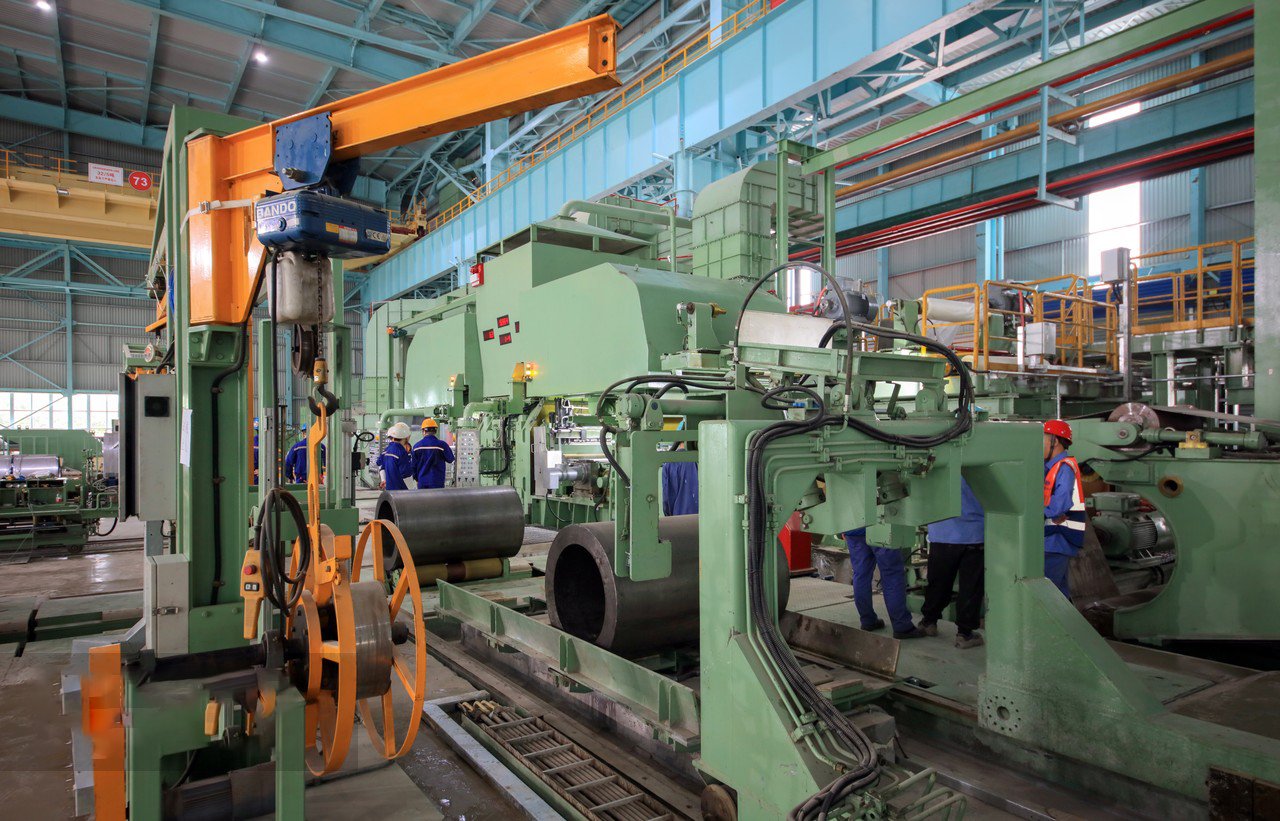
These regulations are not paper tigers; they are the enforced gatekeepers of the world’s most valuable markets. The enforcement authorities in the EU and other regions have become increasingly sophisticated and vigilant, using data analytics and targeted inspections to identify non-compliant goods. Ignoring the potential consequences is not a viable business strategy. It's a gamble against ever-increasing odds, where the losses can cripple an otherwise successful export business.
Immediate Financial and Logistical Disruptions
The most immediate and visible consequence of a RoHS or REACH non-compliance issue is the disruption at the border. When a customs authority flags a shipment for a potential violation, a chain reaction of costly events is set in motion. First, the shipment is detained pending investigation. This immediately incurs demurrage and storage fees at the port, which can accumulate rapidly. The exporter is then required to provide extensive documentation and, in many cases, pay for third-party laboratory testing to be conducted in the destination country to either prove compliance or confirm the violation.
If the product is confirmed to be non-compliant, the outcomes are all negative. The shipment will be denied entry into the country. The exporter is then faced with two very expensive options: either pay to have the entire shipment destroyed or pay for return freight to the country of origin. According to a report by the International Federation of Freight Forwarders Associations4, the cost of return logistics can often exceed the initial cost of shipping by as much as 50-70% due to administrative fees and less competitive return-leg pricing.
Consider the case of an exporter sending 20 tons of 430 grade stainless steel sheets to a client in Italy for manufacturing kitchen hoods. A random customs check reveals a restricted substance in the protective PVC film. The shipment, valued at $40,000, is blocked. The exporter incurs daily storage fees, a $2,000 testing fee, and ultimately a $5,000 bill for return shipping. The immediate financial loss is nearly 20% of the product's value, not to mention the complete loss of the sale itself. This single event can wipe out the profit margin from an entire quarter's worth of exports.
Legal Penalties and Lasting Reputational Damage
Beyond the logistical nightmare, non-compliance carries significant legal and reputational weight. Enforcement bodies within the EU have the authority to levy substantial fines on the entity responsible for placing the non-compliant product on the market. These penalties vary by member state but can reach into the tens or even hundreds of thousands of Euros, depending on the severity and scale of the infraction. Furthermore, a confirmed violation often triggers a mandatory recall of any similar products already in the market, the cost of which must be borne by the manufacturer or importer.
However, the financial penalty is often dwarfed by the long-term damage to a company’s reputation. In today's transparent market, news of recalls and compliance failures spreads quickly. It gets logged in public databases, such as the EU’s Safety Gate5 (formerly RAPEX) system, which alerts all member states to dangerous products. Being listed on such a system is a black mark that can be seen by potential customers, partners, and competitors worldwide. It erodes the most valuable asset any exporter has: trust.
A few years ago, we gained a significant client who manufactures commercial catering equipment. They came to us after their previous steel supplier was implicated in a widespread RoHS violation concerning lead content in a specific grade of steel. The supplier was fined heavily, but the real damage was the loss of credibility. Our new client explained that they simply could not risk their own brand's reputation by associating with a supplier who had a documented history of compliance failures. The original supplier didn't just lose one order; they lost their place in the entire professional-grade appliance supply chain.
Exclusion from High-Value Supply Chains
The ultimate and most devastating consequence of non-compliance is being locked out of high-value, quality-sensitive supply chains. Major global manufacturers in sectors like automotive, medical devices, and consumer electronics have incredibly sophisticated supplier quality management programs. These companies, the "gorillas" of the industry, do not tolerate compliance risks. A single violation is often enough to get a supplier blacklisted—not just for one project, but permanently.
These large original equipment manufacturers (OEMs) flow down their compliance requirements to all of their Tier 1, Tier 2, and Tier 3 suppliers. If you are an exporter of stainless steel sheets, you are often a Tier 2 or Tier 3 supplier in these complex ecosystems. A failure on your part can cause a catastrophic disruption for the OEM, potentially halting a multi-million dollar production line. Because the stakes are so high for them, their tolerance for supplier error is zero. They will not hesitate to disqualify a supplier and switch to one with a proven, unimpeachable compliance record.
This is where the true value of a partner like MFY becomes clear. Our proactive, system-wide compliance provides the assurance these major players demand. Our clients, who are often manufacturers selling into these exact supply chains, can leverage our certifications and documentation as part of their own quality package. By sourcing from us, they are not just buying steel; they are buying credibility. They are buying access to the world's most demanding and lucrative customers, secure in the knowledge that the material foundation of their product is solid, certified, and risk-free.
Non-compliance can trigger product recallsПравда
Confirmed violations often require recalling similar products already in the market, compounding financial losses.
Return shipping costs less than initial exportЛожь
Return logistics can exceed initial shipping costs by 50-70% due to administrative fees and less competitive pricing.
What steps can be taken to ensure RoHS & REACH compliance for stainless steel sheet exports?
Knowing the risks is one thing, but building a defense is another. How can you move from a reactive, fearful posture to a proactive, confident strategy for compliance? The key is to implement a systematic process that embeds compliance into your daily operations, rather than treating it as a final hurdle. By following a clear set of steps, you can create a robust framework for consistent success.
To ensure compliance, exporters must establish a formal program that includes collecting full material declarations from all suppliers, implementing a risk-based testing protocol, maintaining meticulous and auditable records, and ensuring all products are correctly labeled and documented according to the specific regulations.
The journey towards foolproof compliance begins with a single principle: trust, but verify. You must shift your mindset from simply collecting certificates to actively managing and validating your supply chain. I guide our clients to think of this as building a "Compliance File" for every product they export. This file should contain a complete, unbroken chain of evidence that demonstrates due diligence at every step. It's not just paperwork; it's your primary shield against non-compliance risks and your strongest proof of professionalism to your customers.

Implementing these steps requires commitment and an initial investment of time and resources. However, this investment pays for itself many times over by preventing costly failures and opening doors to new opportunities. It transforms compliance from a burdensome cost center into a powerful tool for building a more resilient, reputable, and profitable export business. At MFY, these steps aren't just a recommendation; they are the blueprint of our own operational promise to every client we serve.
Step 1: Establish a Formal Compliance Program and Supplier Management
The foundational step is to formalize your commitment. This means moving beyond ad-hoc checks and establishing a documented internal compliance program. This program should appoint a specific person or team responsible for overseeing all RoHS and REACH related activities. Their first task is to create a policy that clearly defines your company's commitment to compliance and outlines the requirements for all suppliers. This policy becomes the backbone of your supplier management strategy.
When onboarding any new supplier—whether it's for raw materials, processing chemicals, or even packaging—they must be provided with this policy and contractually obligated to adhere to it. The core of this is the requirement for a Full Material Declaration (FMD)6. An FMD is a detailed report listing all substances present in a material, as opposed to a simple "yes/no" Certificate of Compliance. While obtaining FMDs can be challenging, it is the gold standard for due diligence. For critical components, a supplier's refusal or inability to provide an FMD should be a major red flag.
At MFY, our supplier qualification process is rigorous. Before we approve a new source for any ancillary material, such as a specific type of processing oil, they undergo a comprehensive audit. This includes a review of their own quality control systems and their ability to provide detailed substance data. We maintain a database of approved suppliers and materials, and our production teams are restricted to using only substances from this pre-vetted list. This proactive control at the procurement stage is the most effective way to prevent non-compliant materials from ever entering your production stream.
Step 2: Implement a Risk-Based Verification and Testing Protocol
Once you have supplier declarations, you need to verify them. It is neither practical nor necessary to test every single item from every shipment. Instead, a risk-based approach is the most efficient and effective method. This means categorizing your materials and suppliers based on their potential compliance risk. High-risk items might include materials from new, unproven suppliers, components with complex chemical compositions (like coatings or adhesives), or materials sourced from regions with less stringent regulatory oversight.
Your verification protocol should define how you will assess these different risk levels. For low-risk items from trusted, long-term partners with a proven track record, reviewing their provided documentation might be sufficient. For high-risk items, your protocol should mandate verification testing. This could start with in-house screening using a handheld XRF analyzer for a quick check on heavy metals. If the screening raises any concerns, or for validating a new supplier, a sample should be sent to an accredited third-party laboratory for comprehensive testing.
This risk-based approach allows you to focus your resources where they are most needed. For example, the stainless steel substrate itself from a reliable mill may be low risk for RoHS substances, but a new anti-corrosion VCI (Volatile Corrosion Inhibitor) paper used for packaging would be considered high risk until it is fully vetted and tested. Documenting this risk assessment and the resulting testing plan is a key part of demonstrating due diligence to authorities.
Step 3: Maintain Meticulous Documentation and Technical Files
If you are ever challenged by a customs authority or a customer, your defense will rely entirely on the quality and completeness of your documentation. The goal is to create a "Technical File" for each product you export. This file serves as the comprehensive evidence of your compliance and due diligence. It should be a living document, updated with every new batch or process change.
The Technical File must contain a range of documents, which should be auditable and traceable. Below is a checklist of essential components for a robust technical file:
| Document Type | Purpose | Key Content |
|---|---|---|
| Bill of Materials (BOM) | To identify all components and materials. | Detailed list of every single material, including coatings, films, and labels. |
| Supplier Declarations | To document compliance from the source. | Signed Declarations of Conformity, FMDs, and lab test reports from suppliers. |
| Risk Assessments | To justify your verification strategy. | Analysis of each material's risk level and the corresponding verification action taken. |
| Test Reports | To provide objective evidence of compliance. | Internal XRF screening results and all third-party laboratory test reports. |
| Declaration of Conformity (DoC) | Your formal, legal declaration of compliance. | The final document you issue, summarizing and attesting to the product's compliance status. |
Maintaining these records digitally in a centralized and secure system is crucial. I recall a client who faced an audit and was able to resolve it within 48 hours because they could electronically pull up the complete technical file, including test reports dating back three years, for the specific batch in question. Their previous system of paper files in various cabinets would have taken weeks to assemble, likely resulting in fines due to the delay. This level of organization is not just good practice; it's a critical business tool.
FMDs are better than simple certificatesПравда
Full Material Declarations provide detailed substance data, offering stronger proof of compliance than basic yes/no certificates.
Testing every shipment is necessaryЛожь
A risk-based approach is more efficient - high-risk items need testing while trusted suppliers may only require documentation review.
- What are full material declarations and why are they important for RoHS & REACH compliance?: Null
What are industry best practices for maintaining ongoing compliance with RoHS & REACH?
Achieving compliance is a significant milestone, but it's not the finish line. Regulations evolve, supply chains shift, and new risks emerge. The true industry leaders are those who treat compliance not as a one-time project, but as a continuous, dynamic process. So, how can you ensure your compliance program remains robust and effective over the long term? The key lies in embedding it into your company's culture and operational DNA.
Best practices for ongoing compliance involve appointing a dedicated compliance manager, conducting regular employee training, performing periodic supply chain audits, and leveraging technology to monitor regulatory changes and manage compliance data effectively. This creates a resilient, self-improving system.
Maintaining vigilance is paramount. I have seen companies invest heavily in achieving initial certification, only to have their systems decay over time due to a lack of sustained focus. A classic pitfall is "personnel dependency," where all compliance knowledge resides with one individual. When that person leaves, the program falters. The best practice is to build a system that is resilient and institutionalized, supported by regular training and clear, documented procedures that anyone in the relevant role can follow. This transforms compliance from a personal responsibility into a shared, organizational capability.
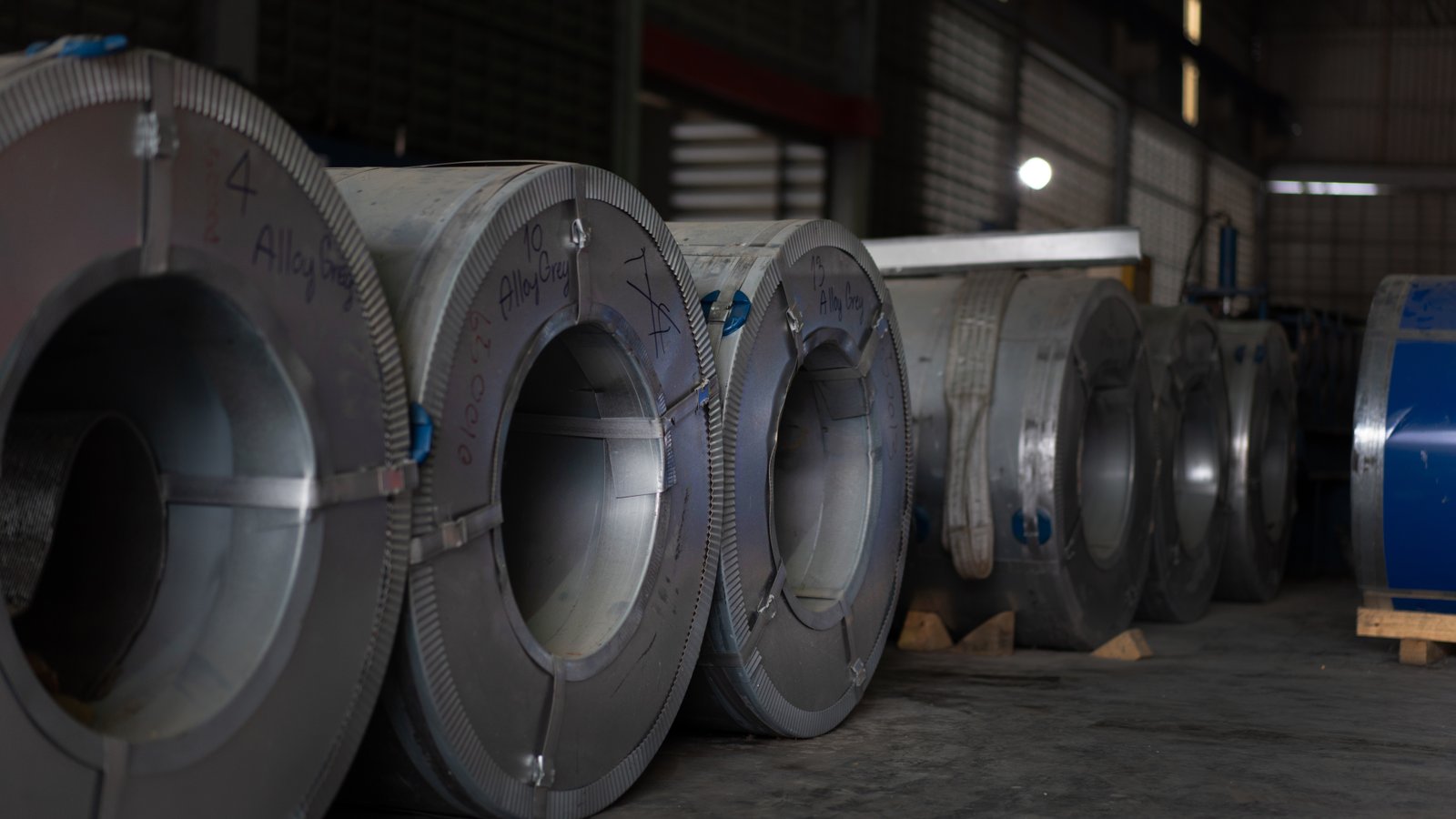
Ultimately, sustained compliance is about creating a culture of quality and accountability. It's about empowering your team with the knowledge and tools they need to make the right decisions every day. By adopting these best practices, you are not just protecting your business from risk; you are building a reputation for excellence and reliability that will become one of your most potent competitive advantages in the global marketplace.
Institutionalizing Compliance Through Dedicated Roles and Training
A compliance program without clear ownership is destined to fail. The most fundamental best practice is to formally appoint a Compliance Officer7 or Manager. In smaller organizations, this may be a dual role, but the responsibility must be explicitly assigned and supported by senior management. This individual acts as the central hub for all compliance activities: monitoring regulations, managing documentation, overseeing testing protocols, and serving as the point of contact for any internal or external inquiries. Their role is to champion the compliance culture throughout the organization.
However, one person cannot do it all. Lasting compliance requires that knowledge be disseminated throughout the company. Regular, role-specific training is essential. Your procurement team needs to be trained on how to vet new suppliers and what documentation to demand. Your engineering and production teams need to understand how material or process changes can impact compliance. Your sales and export teams need to be able to speak intelligently with customers about your compliance program and provide the correct documentation.
At MFY, we conduct mandatory annual compliance training for all staff in our international trade division, supplemented by specific training for our quality and procurement teams whenever a major regulatory change occurs. We run scenarios, review recent case studies of industry failures, and reinforce our internal procedures. This continuous education ensures that compliance is not an abstract concept managed by a single department, but a practical consideration in the daily work of every team member who touches the product.
Proactive Supply Chain Audits and Performance Monitoring
Your compliance is only as strong as your supply chain. A "one-and-done" supplier verification is not sufficient. Best-in-class companies implement a program of periodic, risk-based supplier audits. This doesn't mean you need to conduct a full, on-site inspection of every supplier every year. It means developing a schedule to re-evaluate your suppliers based on their risk profile. High-risk suppliers might be re-audited annually, while low-risk, long-term partners might be re-evaluated every two to three years.
These audits should go beyond just requesting a new certificate. They can involve reviewing the supplier's own internal quality control processes, requesting updated test reports for their raw materials, or even conducting your own verification testing on a sample from a recent shipment. The goal is to ensure their compliance systems remain robust and that there has been no "compliance drift" over time. This proactive approach helps identify potential issues before they become real problems that impact your products.
We supplement these audits with a continuous performance monitoring system. We track supplier-related data points: the completeness and timeliness of their documentation, the results of our own random verification tests, and any feedback from our production teams. This data allows us to assign a "compliance score" to each supplier, which informs our procurement decisions. Suppliers who consistently demonstrate a high level of performance become preferred partners, while those whose performance slips are flagged for intervention or potential replacement.
Leveraging Technology for Regulatory Monitoring and Data Management
In the digital age, managing compliance manually with spreadsheets and filing cabinets is highly inefficient and fraught with risk. Leveraging technology is a critical best practice for maintaining an effective, long-term program. There are now numerous software platforms and service providers that specialize in compliance management and regulatory monitoring. These tools can automatically track changes to global regulations like RoHS and REACH and provide timely alerts when a substance in your material database is impacted.
These platforms can also serve as a centralized repository for all your compliance documentation—your technical files, supplier declarations, and test reports. This creates a "single source of truth" that is secure, easily searchable, and auditable. When a customer requests a Declaration of Conformity for a specific product shipped two years ago, you should be able to generate it from the system in minutes, not spend days digging through old records.
At MFY, we have invested in a customized digital platform that integrates our supply chain data with a regulatory database. When the ECHA adds new substances to the SVHC list, our system automatically screens our entire Bill of Materials database to check for any potential conflicts. If a match is found, it automatically flags the material and notifies our compliance team to take action. This automated, proactive approach is infinitely more reliable than manual tracking and allows us to stay ahead of the curve, providing our clients with uninterrupted compliance assurance. This technological backbone is the engine that powers our promise of reliability.
Compliance requires continuous monitoringПравда
Regulations and supply chains change over time, making ongoing monitoring essential for maintaining compliance.
One person can manage compliance aloneЛожь
Relying on a single individual creates risk; compliance knowledge should be institutionalized through training and documentation.
Заключение
In today's global market, RoHS and REACH compliance is not a regulatory burden but a clear strategic advantage. A proactive strategy built on diligent supply chain management, meticulous record-keeping, and partnership with a fully integrated supplier like MFY ensures seamless market access and builds enduring client trust.
-
Learn how these regulations affect market access and compliance ↩
-
Identify processing materials that could impact regulatory compliance ↩
-
Discover how XRF analyzers help in detecting metals like lead and mercury ↩
-
Understand cost implications in supply chain due to compliance issues. ↩
-
Learn about critical compliance tools and their global effects. ↩
-
Understand the difference between a detailed material report and basic compliance certification. ↩
-
Understand the responsibilities and importance of a Compliance Officer ↩
У вас есть вопросы или нужна дополнительная информация?
Свяжитесь с нами, чтобы получить индивидуальную помощь и квалифицированный совет.
